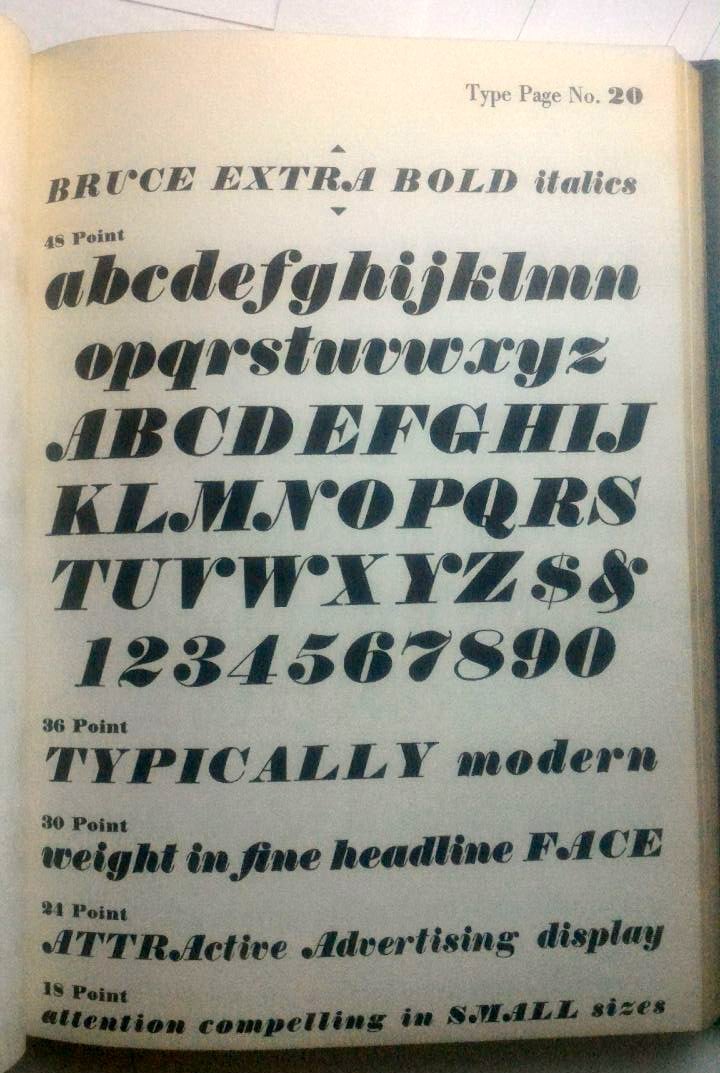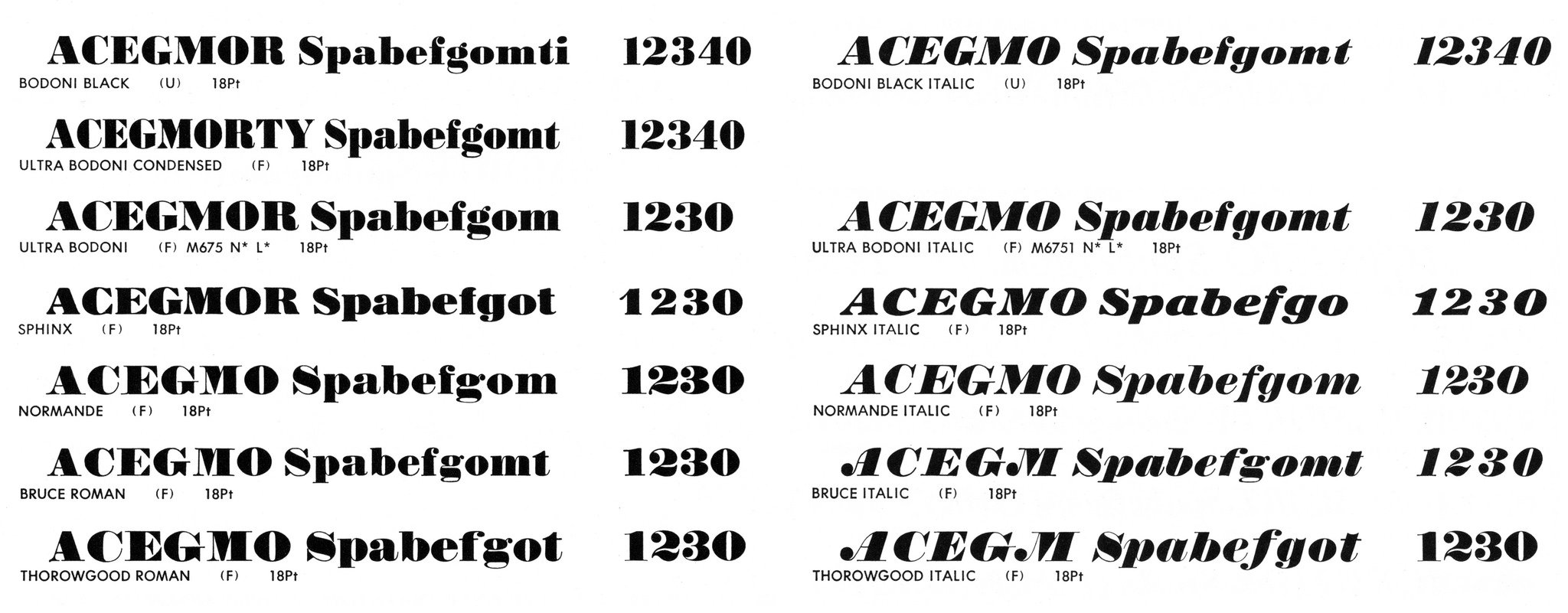Information about a typeface: Bruce

Fernando Díaz
Posts: 133
in Type History
Hello everyone,
I'm looking for any piece of information regarding 'Bruce' typeface. I'm sending some pictures of a US type catalogue from 1935. But I have an older specimen of 1838 with the same typeface without a name, and I'm trying to identify it.
Thanks in advanced & sorry for the bad pictures.


I'm looking for any piece of information regarding 'Bruce' typeface. I'm sending some pictures of a US type catalogue from 1935. But I have an older specimen of 1838 with the same typeface without a name, and I'm trying to identify it.
Thanks in advanced & sorry for the bad pictures.


Tagged:
1
Comments
-
Based on the name I think this is one of the fat face designs cut at the Bruce Foundry in New York. IIRC the Bruce foundry sold matrices to some other foundries (See David Bruce Jr.’s History of Typefounding in the United States), and Bruce designs were knocked off constantly, so it’s hard to be sure. Not that the Bruce fat faces were original—they were knockoffs of designs by London typefounders like Thorowgood and Bower & Bacon.
2 -
Everything I read indicates that many of Bruce’s designs were original. Their fat face is distinct from Thorowgood, for example. Samples from the A.T.A. Type Comparison Book by Frank Merriman, 1965:

Are you sure it’s a knockoff, James?1 -
Knockoff is too judgemental. But I do think that the Bruce fat faces are derivative of designs from London.1
-
Ok, I thought you were saying the design itself was a renamed copy that was previously available from another foundry.0
-
I don’t think the Bruce fat faces were actually copies in the sense that electroplate pirates copied ATF, Bruce, and MS&J and the other prominent foundries. But if you dig into the London specimen books of the nineteenth century they contained a wide array of fat faces with different degrees of weight and contrast, and different serif and italic treatments. Then the Americans got it and they all electroplated each other and identifying provenance can be a lost cause in some cases.1
-
What James said.
This is Figgins 1801
An this is (Henry) Caslon 1841
1 -
Thanks for the images Pablo. Those same designs turn up later in the Kinsley catalogue. I checked Bruce Jr.’s book and he said Kinsley bought matrices from the Starr Brothers. Down the rabbit hole I go!
The Starrs were itinerant typefounders of questionable manufacturing ability and of business acumen. At some time ca. 1810 David Bruce Sr. went to London to learn stereotyping for his publishing business. After he returned, American type founders wouldn’t supply him all that he needed because they thought that stereotyping would hurt their business. So Bruce Sr. helped secure credit for the Starrs to set up a typefounding business, but Richard Starr got bored and the Starrs bailed. Bruce Sr. took over the business because he needed it to make stereotyping take off in America and probably because he cosigned on the loan.
I’ve also read some footnote or other about Richard Starr, late in life, claiming to have cut hundreds of types for various American foundries. But he was bitter and drunk, and I’ve never confirmed if he was the Bodoni of early America who got written out because he was bad at business or if he was just talking so people would buy him drinks.
Reading between the lines, Bruce Sr. probably paid the Starrs to crank out copies of typefaces from specimens he brought back from London. The Starrs then did work for some other foundries, including a failed attempt at a new foundry in Philadelphia. They cut matrices for Kinsley, who didn’t last long. So the assets of those two foundries were probably sold off to other foundries, creating at least three American sources for these designs. Which would explain why there are some almost exact copies of American type prior to the advent electroplating in 1838 despite America having very few capable punchcutters.3
Categories
- All Categories
- 46 Introductions
- 3.9K Typeface Design
- 486 Type Design Critiques
- 563 Type Design Software
- 1.1K Type Design Technique & Theory
- 655 Type Business
- 858 Font Technology
- 29 Punchcutting
- 519 Typography
- 119 Type Education
- 323 Type History
- 77 Type Resources
- 112 Lettering and Calligraphy
- 33 Lettering Critiques
- 79 Lettering Technique & Theory
- 555 Announcements
- 94 Events
- 114 Job Postings
- 170 Type Releases
- 176 Miscellaneous News
- 276 About TypeDrawers
- 54 TypeDrawers Announcements
- 120 Suggestions and Bug Reports


